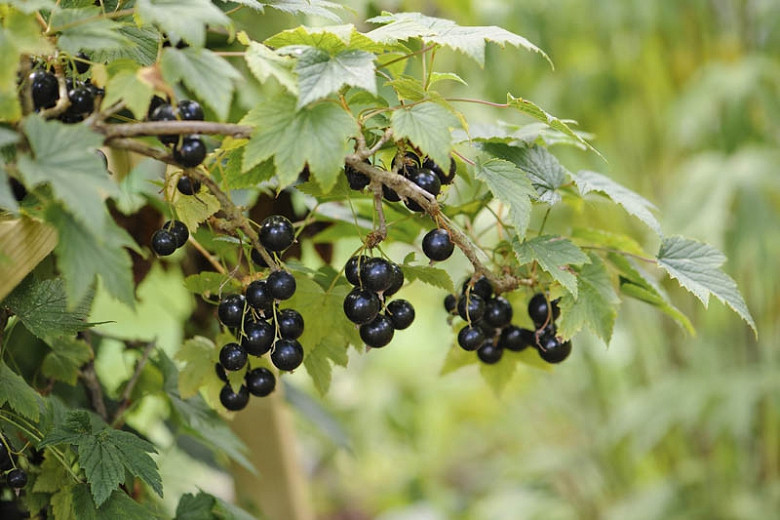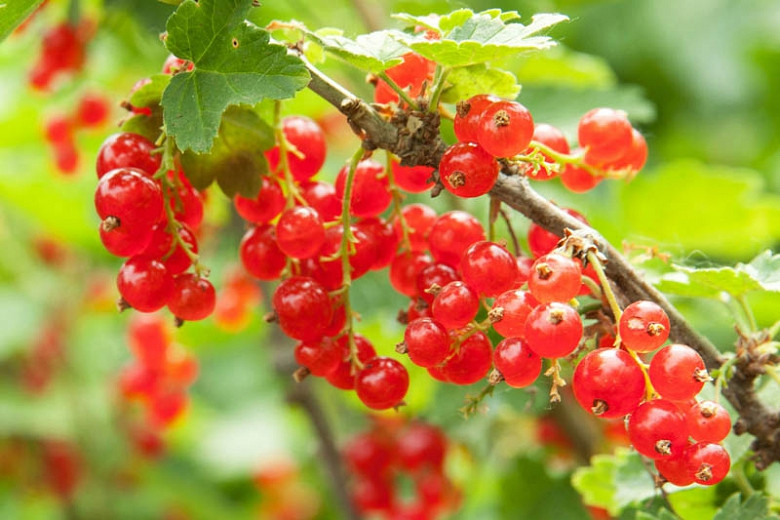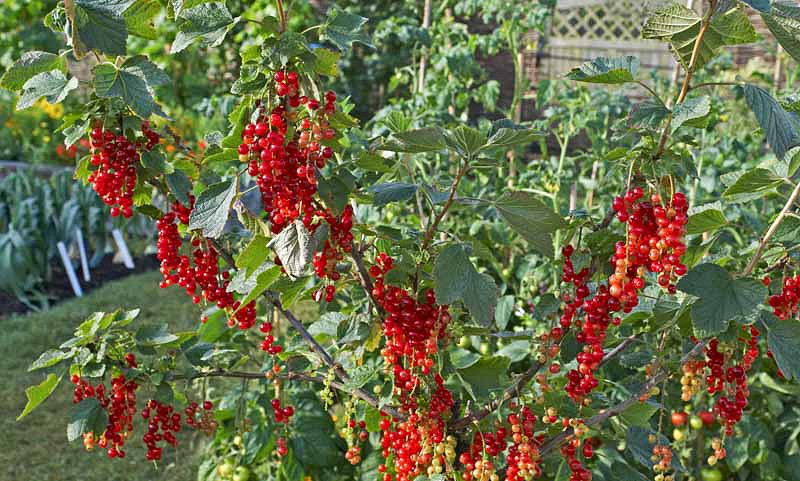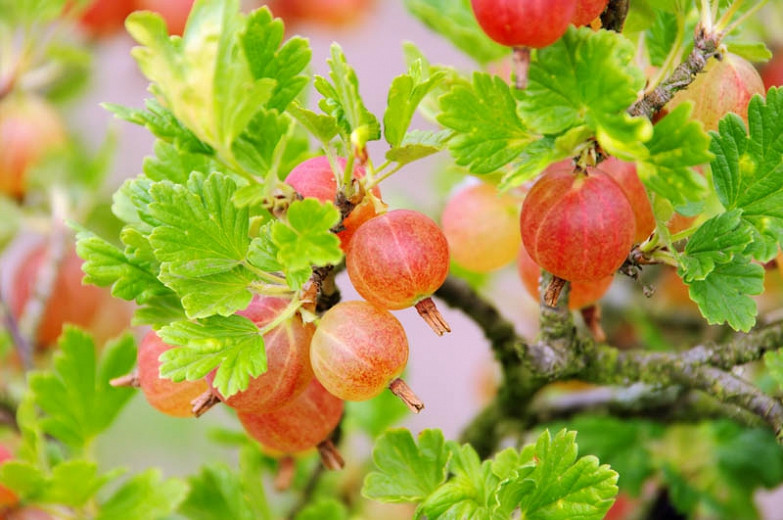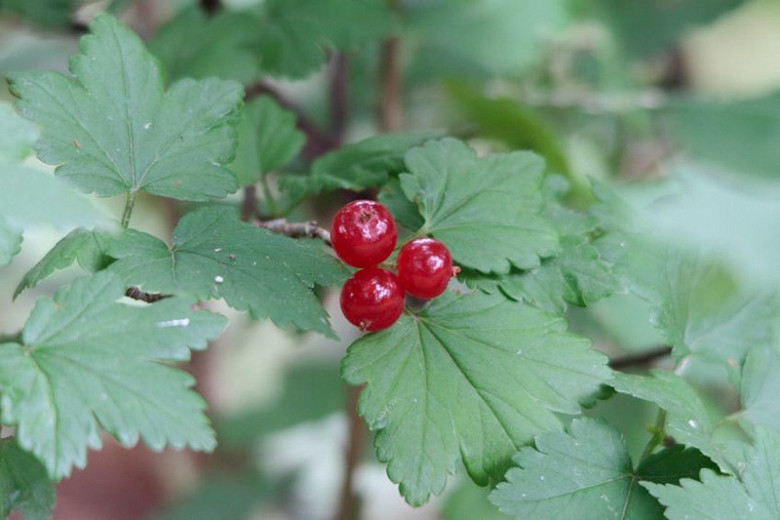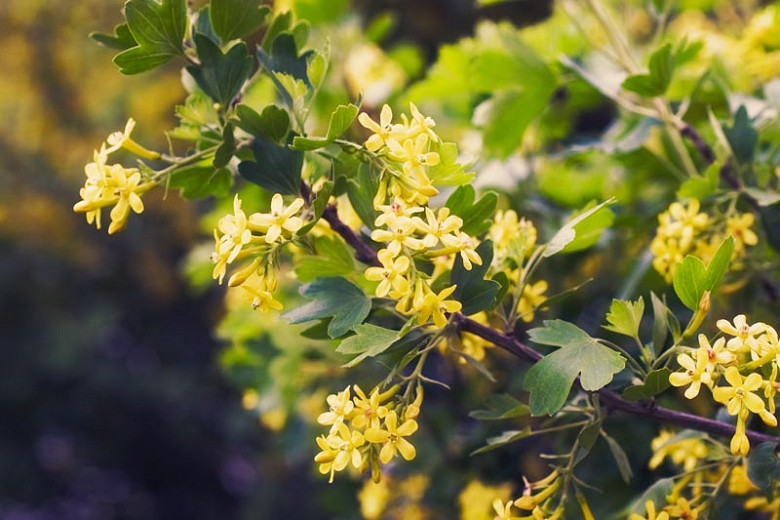Ribes sanguineum (Red Flowering Currant)
Ribes sanguineum (Red Flowering Currant) is a medium-sized, bushy deciduous shrub noted for its abundant showy flowers and fall berries. In early to mid-spring, drooping clusters of 10-30 small, pink to deep red flowers occur along the length of the stems. They literally smother the shrub and create a great floral display. They are followed by small blue-black berries covered with a thin white waxy coating, holding about 20 seeds each. Although very tart, the berries are suitable for jam, jelly, pie, juice, or syrup. The attractive foliage of rounded, 3-5 lobed, dark green leaves turns shades of yellow and red in fall. The leaves release a strong resinous scent when crushed. The thin orange or red tinted bark turns gray-brown and peels from older stems. Native to western coastal North America, Red Flowering Currant is commonly found in open woods, forest gaps, dry rocky slopes, and disturbed sites from sea level up to 6,000 ft. It is attractive as a landscape specimen or informal hedge. It is also useful in restoration plantings and perfect for wildlife gardens. Red Flowering Currant provides early spring nectar for hummingbirds and butterflies, forage for many species of moths and butterflies, and nesting sites or covers for songbirds and small mammals. Numerous birds and small mammals consume the berries.
- Grows up to 5-12 ft. tall and wide (150-360 cm). Red Flowering Currant spreads slowly by seed, root sprouting, and layering.
- A full sun to part shade lover, this plant is easily grown in moderately fertile, dry to moist, well-drained soils. This plant will grow in full sun in cooler climates but appreciates some afternoon shade in very hot settings.
- Provide supplemental water during the first and perhaps the second season but allow the soil to dry 3-4 in. down (7-10 cm) between irrigations and do not provide water after mid to late summer when leaves naturally begin to fall. Drought tolerant once established.
- Perfect for informal hedges or screens, and wildlife gardens.
- Red Flowering Currant is fairly resistant to most insect and disease pests of this genus including aphids and currant fruit flies. Keep an eye out for currant borer and oak root fungus. Deer resistant.
- Prune immediately after flowering to promote vigorous growth suitable for future flower-bearing.
- Propagate by seed, cuttings, or layering.
- Native to British Columbia, California, Idaho, Oregon, and Washington.
Requirements
| Hardiness | 6 – 8 |
|---|---|
| Heat Zones | 6 – 8 |
| Climate Zones | 4, 5, 6, 7, 8, 9, 14, 15, 16, 17, 18, 19, 20, 21, 22, 23, 24, A3 |
| Plant Type | Shrubs |
| Plant Family | Ribes – Currants |
| Exposure | Full Sun, Partial Sun |
| Season of Interest | Spring (Early,Mid)Fall |
| Height | 5' – 12' (150cm – 3.6m) |
| Spread | 5' – 12' (150cm – 3.6m) |
| Spacing | 60″ – 144″ (150cm – 360cm) |
| Water Needs | Average |
| Maintenance | Low |
| Soil Type | Chalk, Clay, Loam, Sand |
| Soil pH | Acid, Alkaline, Neutral |
| Soil Drainage | Moist but Well-Drained, Well-Drained |
| Characteristics | Showy, Fruit & Berries |
| Native Plants | United States, California, Pacific Northwest, Idaho, Oregon, Washington |
| Tolerance | Deer, Drought |
| Attracts | Birds, Butterflies, Hummingbirds |
| Garden Uses | Hedges and Screens, Rain Gardens |
| Garden Styles | Informal and Cottage |


